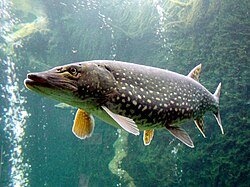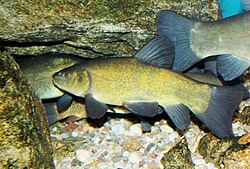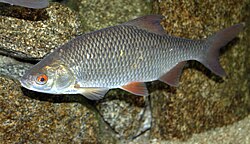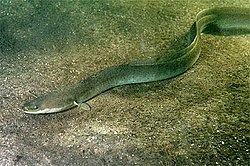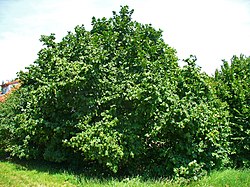| Cromer Forest-bed Formation | |
|---|---|
| Stratigraphic range: Early Pleistocene - Middle Pleistocene | |
 Cromer Forest-bed Formation exposed at the base of the West Runton Cliffs | |
| Type | Geological formation |
| Unit of | Dunwich Group |
| Sub-units | Sheringham Member, Runton Member, West Runton Member, and Bacton Member |
| Underlies | Middle Pleistocene glacial deposits |
| Overlies | Wroxham Crag Formation or unconformity with Chalk Group |
| Thickness | around 6 metres (20 ft) |
| Lithology | |
| Primary | sands and silts |
| Other | peat, mud, silty marl |
| Location | |
| Coordinates | 52°56′28″N1°15′11″E / 52.941°N 1.253°E |
| Region | Norfolk |
| Country | England |
| Type section | |
| Named for | Cromer |
| Named by | Clement Reid |
| Location | The coast of North Norfolk from Weybourne to Happisburgh |
| Year defined | 1882 |
| Country | England |
The Cromer Forest-bed Formation, sometimes known as the Cromer Forest Bed, is a Pleistocene aged geological formation in Norfolk, England. It consists of river gravels, estuary and floodplain sediments predominantly silt, sand, and muds as well as peat along the coast of northern Norfolk. [1] The formation records a number of glacial cycles, with deposition occurring in both relatively cold environments during glacial periods, [2] as well during interglacial periods when the area had a temperate climate. [3] The Cromer Forest Bed itself varies in age from about 2 to 0.5 million years ago, from the Early Pleistocene to early Middle Pleistocene, [4] though the most fossiliferous strata, such as the West Runton Freshwater Bed date to towards the end of deposition during the early Middle Pleistocene. The fossiliferous West Runton Freshwater Bed is the type locality for the Cromerian Stage of the early Middle Pleistocene between 0.8 and 0.5 million years ago. [5] Some fossils from the Cromer Forest Bed likely come from Early Pleistocene layers, though many finds are found out of stratigraphic context. [6]
Contents
- Paleontology and paleoanthropology
- Mammals
- Birds
- Amphibians
- Reptiles
- Fish
- Insects
- Flora
- See also
- References
- Further reading
- External links
It is about 6 metres (20 ft) thick [1] and is exposed in cliff section near the village of West Runton.










































